1. Stage 2: Dissatisfaction
1.1. Characteristics
1.1.1. Confusion and frustration around goals, deliverables, roles and responsibilities
1.1.2. A gap between expectations and reality
1.1.3. Competition for attention, power and decision-making authority
1.1.4. Forming of coalitions
1.1.5. Conflict expressed
1.2. Needs
1.3. Challenges
2. Stage 3: Integration
2.1. Characteristics
2.1.1. Increased clarity and commitment to goals, deliverables, tasks, roles, responsibilities, accountabilities and structure
2.1.2. Increased commitment to values and norms
2.1.3. Increased task accomplishment
2.1.4. Tendency to avoid conflict
2.1.5. Growing trust, harmony, respect and unity among team members
2.1.6. Use of team language, we rather than me
2.1.7. Willingness to share leadership and responsibility for team functioning
2.2. Needs
2.2.1. Integration of goals, roles and accountabilities
2.2.2. Continued skill and knowledge development
2.2.3. Encouragement to share different perspectives and to explore disagreements in order to develop better solutions
2.2.4. Continued building of positive and trusting relationships
2.2.5. Greater degree of shared leadership and responsibility for team functioning
2.2.6. Focus on increasing productivity
2.2.7. Evaluating of team functioning
2.3. Challenges
2.3.1. Sharing control
2.3.2. Addressing conflict
3. Stage 4: Production
3.1. Characteristics
3.1.1. Clear purpose, values, goals, deliverables, roles, responsibilities and accountabilities
3.1.2. Empowering team practices that free team eneergy and lead to continuos improvement
3.1.3. Relationship and communication built on trust, mutual respect and openness
3.1.4. Flexibility and shared leadership that allow the team to respond to new challenges
3.1.5. Optimal productivity and high standards
3.1.6. Recognition and appreciation for individual and team accomplishments
3.1.7. High Morale
3.2. Needs
3.2.1. Continued focus on productivity
3.2.2. Decision-making autonomy within boundaries
3.2.3. Continuous improvement and new challenges
3.2.4. Recognition and celebration of individual contributions and team accomplishments
3.3. Challenges
3.3.1. New Challenges
3.3.2. Continued growth and learning
4. Stage 1: Orientation
4.1. Characteristics
4.1.1. Moderate eagerness
4.1.2. High, often unrealistic expectations
4.1.3. Anxiety about roles, responsibilities, accountabilities, acceptance, how much to trust others and demands on their time
4.1.4. Tentative, polite, conforming behavior
4.1.5. Lack of clarity about purpose, norms, goals, deliverables, roles, responsibilities, accountabilities and structure
4.1.6. Dependence on authority or a designated leader for direction
4.1.7. Testing of boundaries
4.2. Needs
4.2.1. Clear agreements on team's purpose and values
4.2.2. Agreement on goals, roles and strategies for accomplishing work
4.2.3. Agreement on communication, decision making and accountability practices
4.2.4. Agreement on scope of authority and boundaries
4.2.5. information about available resources and support
4.2.6. Knowledge about one another to utilize the team's diverse talents
4.3. Challenges
4.3.1. Personal well-being
4.3.2. Acceptance
4.3.3. Trust
5. Characteristic of High Performing Team
5.1. Purpose and Value
5.1.1. I know what i have to do and the team's goals are clear
5.2. Empowerment
5.2.1. Everyone takes some responsibility for leadership
5.3. Relationships and Communication
5.4. Flexibility
5.5. Optimal Performance
5.6. Recognition and Appreciation
5.6.1. Feel appreciated and supported by others
5.7. Morale
5.7.1. We enjoy working together and we have fun
